

2012-11-10 17:16:00
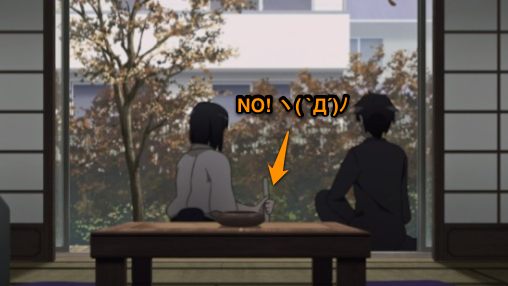
Over the past few weeks I've been following one of 2012's hit anime: Sword Art Online (trailer). I love the art work, the music, the character designs, the plot and the character development. It really is an awesomely engaging show.
It is because I love this show so much that the above screencap irks me so! They put so much effort into the show, but then make such a basic mistake! If Suguha (Kazuto's niece) is such an accomplished kendoka, who's been practicing kendo for over ten years, then she would not put a shinai with its tip down to the ground! WTF A-1?!
ヽ(#`Д´)ノ
kilala.nl tags: kendo, japan, anime, meh,
View or add comments (curr. 0)
2012-02-03 19:50:00
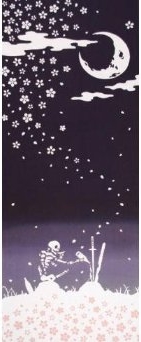
In kendo practitioners generally all look the same. With some exceptions, everyone wears a dark blue uniform and a mostly black bogu. Some people have a differently coloured do-dai, like red or blue or hot pink :p But overall one can say there's little to no space for personalization.
The only part of the whole uniform that expresses the individual is the tenugui: a cotton towel, wrapped around the head. In Japan, tenugui have dozens of uses, from dish rag to headband, to table cloth, to decoration. And us kendoka use it to catch sweat and to keep our helmets clean(er). ^_^
Tenugui come in greatly varying designs. From very simple and plain, to colourful and intricately designed. Many tenugui are 100% meant for decoration and are sold at rather steep prices. There are shops specializing in the sale of these design concious towels.
And it's through their tenugui that kendoka get the chance to express a little individualism, character if you will. Many wear cloth with inspiring words or phrases. Others have cloth with their dojo's logo, or tenugui that were gifted at special occasions. Personally I already have quite a few to choose from and there are more on their way.
Each of these has some special meaning to me, serving as inspiration for me. The ones from Niels and Kaijuu are reminders of friendship. The Tigers one is also for fighting spirit. The Sakurajima volcano ones are for slumbering violence. The white rabbit one is because of this :D
And of course the skeleton ones are as reminders of my loving wife and her never ending support in my kendo! They are named as follows:
With many thanks to JEDict for the help in translating ^_^
kilala.nl tags: kendo, sports, japan,
View or add comments (curr. 3)
2011-11-13 13:14:00
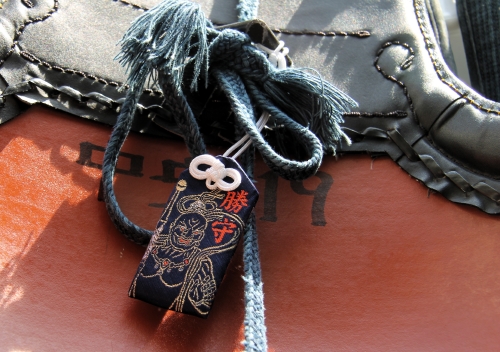
As I wrote before I bought a number of omamori when we were in Japan: amulets purchased at temples, for various purposes. For example: the one I bought for Marli is for a happy marriage, but there's plenty of other kinds. Good luck, aid in studies, good health, and plenty, plenty more.
For my dojo's sensei and trainers I bought charms from the Hakozaki shrine, dedicated to Hachiman (a god of war and harvest). The ones I bought were for success in sports and seeing how Hachiman is protector of warriors I reckoned that was appropriate for kendoka and kenshi. It gladdens me that my teachers were happy with the token of appreciation and at least two of them now wear their omamori on the inside of their do.
Now it's time to delve a little into the one I bought for myself. Bought at the Todaiji temple in Nara the origin is a bit of a contrast with my teachers' amulets. Hakozaki's shrine is shintoistic and dedicated to a god of war, while Todaiji is a buddhist temple; we all know the buddhist's take on violence.
The creature, or person, depicted on my omari is Misshaku Kongō (密迹金剛), also called Agyō (阿形), one of the two Nio: wrathful and strong guardians of the Buddha. To quote Wikipedia:
"They are manifestations of the Bodhisattva Vajrapāṇi protector deity and are part of the Mahayana pantheon. According to Japanese tradition, they travelled with the historical Buddha to protect him. Within the generally pacifist traditions of Buddhism, stories of Niō guardians like Kongōrikishi justified the use of physical force to protect cherished values and beliefs against evil."
Agyō is a symbol of overt violent, as oppsoed to Ungyō who symbolizes latent strength. I reckon both make great deities for a bit of backup in kendo ^_^
Funnily enough, Flickr user GreenTea has the exact same omamori on his (or her?) do. The fine people at Miyako Kendogu also sell an omamori specifically for success in kendo, however Andy Fisher later told me this is not actually a blessed amulet, but instead "rather they are more of a novelty/souvenir type omamori". Of course the best places to buy omamori for budo sports is from the Katori and Kashima shrines, origin of budo. Those shrines were out of our way though, being east of Tokyo.
Interestingly I've learned that Amsterdam is home to Europe's only shinto shrine: Guji Holland Yamakage Shinto Shrine. At least there's a place close to home where we can safely (or at least in a traditional fashion) dispose of the omamori once they have served their purpose.
View or add comments (curr. 0)
2011-08-03 08:36:00
Recently George McCall posted a translation of a 1978 article on the teaching of tsuki, the kendo thrust to the throat. The article is very educational in regards to the pre- and post-war history of kendo and on how the sport has developed. It has also enticed a "Aha Erlebniss" in me with regards to the kendo term datotsu: a scored point. The article includes the following passage:
"In this way, even though we note the success of modern kendo, we must deeply consider and reflect on what its become. One example is the case where we have banned tsuki for use in children of junior high school age and below; to look at it a different way, if you consider the very basis of kendo – hitting a clear DATOTSU (打突) i.e. cutting (打) and thrusting (突) – we have removed the thrusting part (突) and as such its not an exaggeration to say what we are left with is a kendo that incomplete (deformed)."
It had never occured to me that the is litterally "da to tsu"! Hence the "Aha Erlebnis", because the kanji for the word are indeed "da" and "tsu" the "to" being implied".
Anyway... a good article, in spite of its age! I wonder how much has changed in the past 20+ years, with regards to the teaching of tsuki. Currently I'm under the impression that it's been mystified, almost to the level of the jodan no kamae. People think it's scary, it's difficult and it's dangerous. And thus it's still not taught. On the other hand, the article has made me feel better about attempting the occasional tsuki on Martijn. -Especially- when he's in jodan :p
Also, something else from the article just "clicked" with what Loyer-sensei has been trying to teach me regarding small men (bold and underline for emphasis):
"The purpose to have [young students] study tsuki is that the children should be forced to understand the following points about the importance of kihon:
*click*
kilala.nl tags: kendo, sports, japan,
View or add comments (curr. 2)
2011-06-01 12:45:00
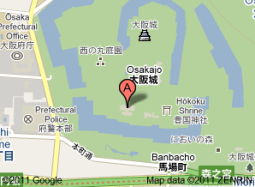
In a few months the Sluyter family will travel to Japan for three weeks of holiday. Together with our good friends Kaijuu and Michel we'll stick around the Kyushu island for a week and hang around the Kansai area (Osaka) for another two weeks. It'll be nice to go back to Japan, especially Kansai.
In preparation for our trip I've already started expanding the Google Map for Shiranai Travel with all manner of interesting sights. Most of these will be centered around Kyushu, Hiroshima, Kobe, Osaka and Kyoto because we're temporarily avoiding going further east what with the whole Fukushima deal. I mean, we don't expect anything to be wrong with Tokyo and so forth, but we can always leave those areas for another visit.
One thing I will put on my "must do" list involves kendo (sorry honey!). I've recently learned that there are two excellent dojo right in the vicinity of our appartment building in Tanimachi Yon-chome. What's more, the Syudoukan dojo (pictured left) is actually on the Osaka-jo (castle) grounds! Both dojo welcome foreign visitors, so how can I pass up an opportunity like that?! Judging by the map I was actually pretty close to the Syudoukan dojo when we visited the gardens on New Year's night. The other dojo, Yoseikai, is a short trip away by subway and is home to one of the editors of the Kenshi247 website.
View or add comments (curr. 3)
2011-05-23 16:49:00
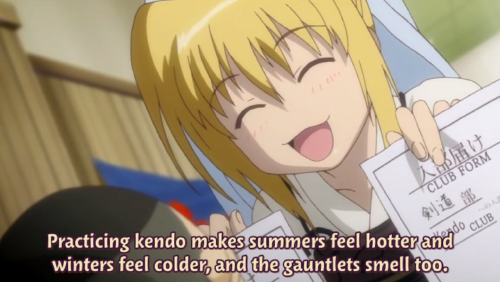
There aren't many anime that focus on kendo, the most famous one being a series from the early eighties: Musashi no ken (lit. "the sword of Musashi"). Another, much more recent one, from the fall of 2007 is Bamboo Blade. The screenshot above is from the show, ridiculing one of the commonly known aspects of kendo: kendoka and their equipment stink, especially during summer (^_^);.
Bamboo Blade really isn't that good: I'd qualify the art as meh, the story as generic (though it's growing on me after a few episodes) and the animation as crude. But still, it's about kendo, it does a fair job of portraying shiai and it conveys the enthusiasm kendoka have for their sport pretty well!
kilala.nl tags: anime, kendo, japan,
View or add comments (curr. 0)
2011-04-11 22:28:00
Kendo is more than just hitting people with bamboo sticks. It entails strategy, philosophy and psychology. And of course plenty of history! Today I contacted our dojo's founder to start learning about our background. Heeren-sensei quickly told me where Furuya-sensei came from, which is a good enough starting point for me to start finding out more.
In the mean time I've finally done something I'd been trying to do for a while: find out the elements that make up the name of our dojo to see how the name is composed and what it means.
On the website it says: "Reshinjuku: Training improves spirit and body". Sadly the Japanese name isn't included anywhere on the site except as a graphic at the top of the site, which makes looking up the relevant kanji quite a pain. But with half an hour of puzzling between Wikipedia, WWWJDIC and the iPhone app Kotoba! I managed to get it all together :)
So here we go!
I'd put that together as: "intensive training tempers the heart", or "school where the heart is trained". In this case "heart" is in the sense of the Japanese word 'kokoro', which describes a concept more than one single word. The "kendo" part at the end of course indicates what skills the school focuses on.
Next up? Trying to figure out the correct kanji for Furuya-sensei's name. Is it 古屋? Or is it 古谷? And which one of the nine spellings for "Isao" (his first name) is the correct one? ^_^ Once I've found that out, the real search for our school's background starts :)
View or add comments (curr. 2)
2009-02-04 08:38:00

Hooray for Japanese silliness! For years now (I've no clue when this got started) emoji have been a staple of Japanese cellphone culture. Combining cuteness with typing efficiency, the Japanese implemented a system involving smileys and dozens of other icons in their keitai. One can cut down on the amount of words tremendously by simply stringing together a few of these symbols to form a semi-sentence.
Or as Ars Technica member Palad1 puts it:
I'm 0.59 GBP poorer but about 12.2315% hipper now that I can text the wife ":metro: :home: :cat: :sushi: :hotmonkeysex: ?". Thanks Ars, for helping me in my eternal quest for marital nooky!
There are multiple ways of getting emoji to work on your iPhone, though all of them require firmware version 2.2 or higher. Unfortunately the emoji keyboard is invisible per default outside Japan, but using apps like Typing Genius - Get emoji ($0.99) one can enable the option in System Preferences.
kilala.nl tags: iphone, japan, apple,
View or add comments (curr. 9)
All content, with exception of "borrowed" blogpost images, or unless otherwise indicated, is copyright of Tess Sluijter. The character Kilala the cat-demon is copyright of Rumiko Takahashi and used here without permission.